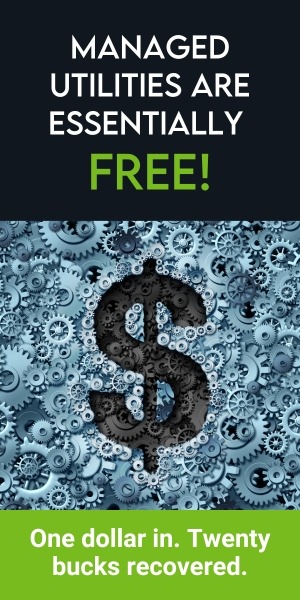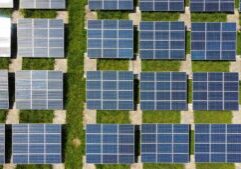Phew. What a whirlwind the last few months have been. Between shifting policies and economic tremors, who wouldn’t love a psychic reading to see where this is all headed? And if there’s one change that could have a particularly strong ripple effect on the multifamily market—it’s tariffs.
Will new tariffs on imports from Canada, Mexico, and China send building costs soaring? Will they choke off supply chains, drive up mortgage rates, or stall new development altogether?
Right now, the energy is shifting. A 25% tariff on steel and aluminum took effect March 4, while broader tariffs on Canada and Mexico hang in the balance. Meanwhile, trade partners are threatening retaliatory moves.
We don’t claim to be housing market psychics, but we’ve shuffled the facts, drawn the cards, and consulted the data oracles. Here’s what the future might hold for the multifamily market in 2025 and how developers can read the signs to make smart, strategic moves.
Card One: The Tower — Rising Construction Costs

Our first card is a warning: disruption ahead.
The National Association of Home Builders foresees tariffs triggering cost increases across all housing types. With the 25% tariff on steel and aluminum now in play, multifamily developers should expect near-term price hikes for essentials like rebar, framing, and roofing.
In 2023, the U.S. imported $6 billion in steel from Canada. With 30% of softwood lumber imported from our northern neighbor, a lumber tariff could increase the cost exponentially. And it’s not just Canada – tariffs on Mexican materials like gypsum that builders need for drywall are also affecting the overall price.
But it’s not all doom and gloom. Based on what happened during the first Trump administration, some experts believe that after the initial steel hike, domestic production may be incentivized to eventually push prices back down.
What the card says: Brace for hikes. Secure materials early and explore alternatives before costs skyrocket.
Card Two: The Moon — The Labor Wild Card

Next in our deck: The Moon, known for being unpredictable.
Tariffs don’t directly touch construction labor, but immigration policies do. The Trump administration has signaled a return to stricter enforcement, and the ripple effects could be serious.
Estimates vary:
- 23% of construction workers are undocumented (Center for American Progress)
- 12% per Pew Research
With ICE arrests already tripling compared to the Biden era (up to 980 per day), the construction workforce could take a significant hit. Fewer workers means longer timelines, higher costs, and more risk for developers.
What the card says: Don’t underestimate the labor question. Factor in potential slowdowns and secure trusted crews in advance.
Card Three: The Wheel of Fortune — Inflation and Market Instability

Our next card is ready to spin: will tariffs spark inflation or not?
Some experts, like Redfin’s Chen Zhao, say yes: construction material tariffs, especially on non-substitutable goods, will likely have an inflationary effect. And he’s not alone. Economist Joseph Brusuelas projects inflation could rise by 0.4%—enough to influence Federal Reserve policy, which could cascade into higher borrowing costs for developers.
But not everyone agrees. Forbes’ Bill Conerly believes tariffs only cause one-time price jolts, not lasting inflation.
What the card says: Inflation may be in play. Watch the Fed’s next move closely as rates could shift quickly.
Card Four: The Hanged Man — Mortgage Rates in Limbo
Mortgage rates are the card hanging in the balance.
Tariffs may pressure inflation. Inflation can sway the government. And when the government moves, mortgage rates follow.
Mark Hamrick (Bankrate) and Kevin Thompson (Newsweek) both foresee higher rates lingering. With the 10-year Treasury yield climbing past 4.5%, housing affordability could tighten further. Expect mortgage rates to hover between 6.5% and 7.5%, making financing trickier for multifamily developers.
What the card says: Assume financing won’t get cheaper. Lock in rates when favorable, and scale projects accordingly.
Card Five: The Magician — Policy Promises & Political Magic
If only we could conjure up a crystal-clear housing policy. But for now, the details remain hazy.
Campaign statements have outlined ambitious goals: lowering inflation, reducing mortgage rates, cutting regulations, and opening access to federal land for housing—all aimed at significantly reducing the cost of new homes.
As Danielle Hale of realtor.com notes, meaningful reforms often face a slow path through Congress. And while The Mortgage Note views the idea of cutting home costs in half as “unlikely,” there may still be movement worth watching.
One encouraging sign is Scott Turner, the newly appointed HUD Secretary. With real-world experience in multifamily development and a leadership role in launching the Opportunity Zone program, Turner brings practical insight that could translate into meaningful action for the industry.
What the card says: Don’t expect instant magic, but stay tuned. HUD’s next moves could hold real potential for multifamily housing.
Final Card: The Hermit — Strategic Patience and Planning
When the future is murky, it pays to slow down and look inward.
With so many variables in play—tariffs, immigration policy, inflation, Fed decisions, and housing regulation—developers should stay flexible, cautious, and informed.
Our advice for multifamily developers:
- Plan for stable-to-high mortgage rates
- Explore alternatives to tariff-impacted materials
- Secure lumber early if possible
- Coordinate labor carefully to avoid disruptions
- Monitor policy shifts at HUD and in Congress
- Delay or scale back new projects if risk feels too high
The Closing Reading
The cards show tension, disruption, and uncertainty, but also opportunity for those who play them wisely. The multifamily housing market in 2025 is entering a high-stakes game. The smartest players will be those who hedge their bets, anticipate disruptions, and stay attuned to every shift in the political and economic winds.
At Conservice, we’ll keep consulting the data, watching the signs, and helping you navigate whatever the deck deals next.
Subscribe To Our Blog Newsletter
Keep yourself ahead of the curve with the latest utility news, trends, & resources.
Editor's Picks
What the 2026 GRESB Updates Mean: Our Observations on the Key Shifts
Change is on the horizon. The 2026 GRESB Real Estate Standard marks a decisive move toward measurable, performance-based climate action. Rather than incremental adjustments, these updates focus attention on the issues that most directly shape long-term value and resilience. GRESB…
Read MoreCalifornia AB1414: New Bulk Internet Opt-Out Law—What You Need to Know
New Requirements Go Into Effect January 1, 2026 California has officially passed AB1414, a bill that changes how property owners and operators can offer bulk internet services to residents. Beginning January 1, 2026, property owners must allow residents the ability…
Read MoreBuilt to Go the Distance: How Properties Achieve ENERGY STAR, LEED, and WELL Certifications
We recently held our first 5K for our team, and it got us thinking. We watched many of our Experts who hadn’t run in years (or ever) lace up, train for weeks, and push through on the big day. The…
Read MoreSmart Waste & Water Analytics: The Next Cost-Cutting Frontier in Multifamily
In this economy, cost control is on everyone’s mind. And energy and payroll usually top the list for multifamily operators. But here’s the thing: water and waste are two of the fastest-growing, least-managed costs eating into margins every day. Consider…
Read MoreYour Utilities Might Be Lying to You.
Preventing Losses from Errors, Theft, and Oversight. Utilities don’t always tell the whole truth. At least not without a little verification. Between billing errors, meter issues, and missed rate updates, it’s easy for even the most diligent property teams to…
Read MoreThe First Bills Are In. Here’s What Early Utility Data Reveals About Student Housing
Move-in day has come and gone. The carpets are clean, the furniture is set, and the flood of parents and students with boxes and carts has finally slowed. For operators, the chaos of Turn is behind them. But another wave…
Read MoreMeet the New Goby Dashboard That Turns Sustainability Data Into Action
Conservice is excited to introduce a new dashboard for Goby, our sustainability and compliance platform. Goby has always helped real estate owners and operators manage utility and sustainability data across their portfolios. With this release, the platform now delivers insights faster,…
Read MoreUtility Data Centralization: Unlocking AI, Energy, and Sustainable Solutions
Let me tell you a secret. If you were to take over my computer at any given moment, you’d probably find 30 tabs, 10 apps, and a spreadsheet all open at once. I’ll admit it: I’m no expert at centralizing…
Read MoreThe Hidden Engine Driving Build-to-Rent in 2025
When the Smiths moved into a brand‑new rental home last spring, they didn’t just discover fresh flooring or smart thermostats; they stepped into a lifestyle shaped by seamless utility management. They never saw a bill go astray, never gawked at…
Read MoreENERGY STAR Portfolio Manager: What’s Really Happening and How to Protect Your Data
If you work in property management or sustainability, you’ve probably heard the headlines. Back in May, several news outlets reported that the federal ENERGY STAR program (including ENERGY STAR Portfolio Manager) could be eliminated. The reality in August 2025 looks…
Read MoreExperience Effortless Utility Management and Cost Savings
Connect with us today to discover how our solutions can ease tenant billback, streamline utility management, and reduce your costs and energy usage. Make your utility management smarter and more efficient with Conservice!













